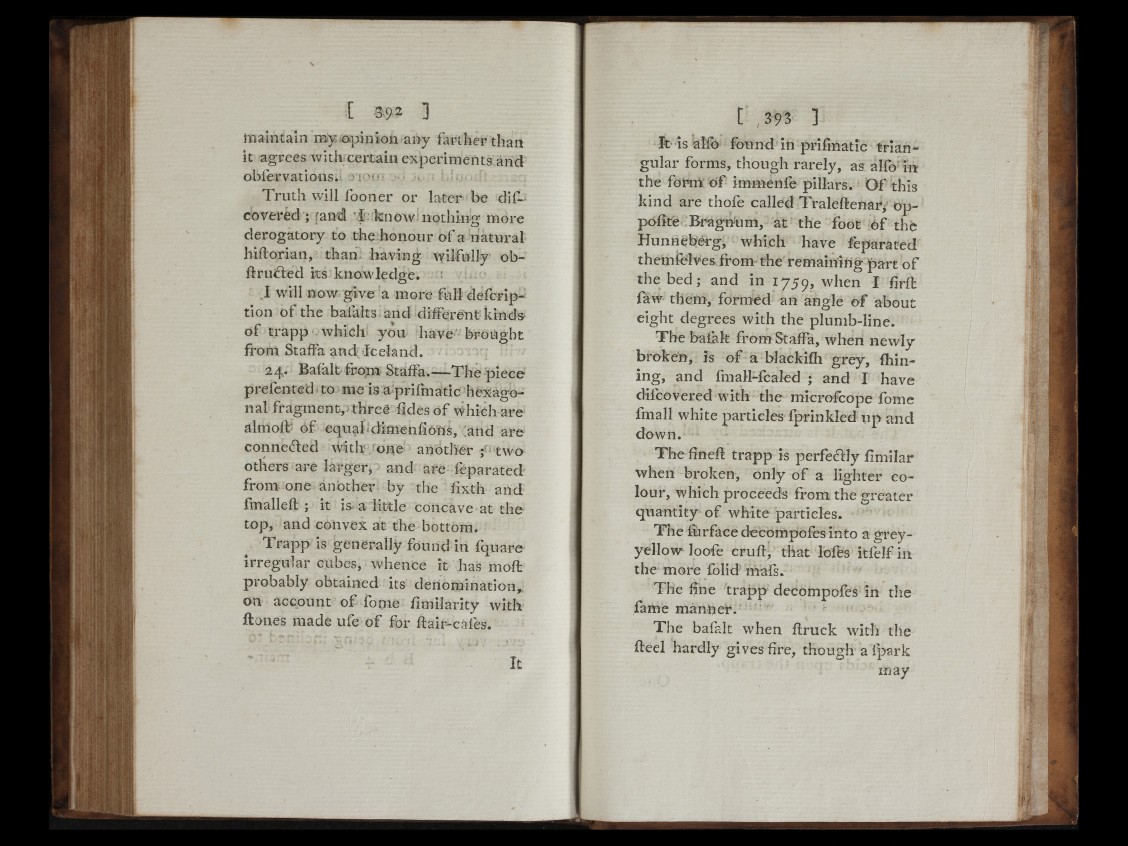
i ''
:.G. fo
« A !¡!
. » Mi ‘ , . •■ 1 ,
J m
(Í 9 7.1 i
maintain my apinlon any farther than
it agrees with certain experiments and
obfervations. : ■
Truth will fooner or later be dif-
covered ; fand 1 know nothing more
derogatory to the honour o f a natural
hiftoriau, than having wilfully ob-
il:ruri:ed ks knowledge.
I will now give a more full deferip-
tion o f the bafalts and different kinds
o f trapp which you have brought
from Staffa and Iceland.
24. Baialt from Staffa.— The piece
prefented to me is a prifmatic hexagonal
fragment, three fides o f which are
almoft' of equal dimenfions, and are
conneiled with one another two
others are larger, and are feparated
from one another by the lixth and
fmalleft ; it is a little concave at the
top, and convex at the bottom.
Trapp is generally found in fquare
irregular cubes, whence it has moft
probably obtained its denomination,
on account o f fome fimilarity with
ftones made ufe o f for ftair-cafes.
It
It is alio found in prifmatic triangular
forms, though rarely, as alfo in
the form o f immenfe pillars. O f this
kind are thofe called Traleftenar, oppofite
Bragnum, at the foot o f the
Hunnebérg, which have feparated
themfelves from the remaining part o f
the bed; and in 1759, when I firft
faw them, formed an angle o f about
eight degrees with the plumb-line.
The bafalt from Staffa, when newly
broken, is o f a blackifli grey, fliin-
ing, and fmall-fcaled ; and I have
difcovered with the microfcope fome
fmall white particles fprinkled up and
down.
The fineft trapp is perfeéily fimilar
when broken, only o f a lighter colour,
which proceeds from the greater
quantity o f white particles.
The liirface decompofes into a grey-
yellow loofe cruft, that lofes itfelf in
the more folid mais.
The fine trapp decompofes in die
fame manner.
The bafalt when ftruck with the
fteel hardly gives fire, though a fpark
may
ib